Read The
Current Issue
Move On
Whether you’re a mountain athlete looking to get better or want to stay active and independent as you age, mobility can help.
// By lila edythe

Strength and conditioning coach (and former professional big mountain skier) Crystal Wright doesn’t mince words when it comes to mobility. “Mobility is how you prevent injury and still enjoy the outdoors and the activities you love!” she says. And mobility isn’t just something aging super athletes should think about. “Everyone needs better mobility,” Wright says. “The better your mobility is, the better you are able to protect your body, and protecting your body is important at any age.”
The concept of mobility as an important part of fitness and of aging well is relatively new. Previously, mobility was often conflated with flexibility. Grayson Wickham, a physical therapist and the founder of Movement Vault, a mobility and movement company, told Shape magazine, “People have been using flexibility and mobility interchangeably forever, but recently there’s been a push to separate the two concepts.”
So, what exactly is mobility? And how is it different from flexibility? Chris Bates, a personal trainer for 10 years and the founder of Jackson-based Victory Lab, says flexibility is passive and mobility is active. “Think of a trainer lifting your leg up while you’re lying on your back versus you lifting your leg on your own from the same position. How far a trainer can move your muscles is flexibility. Mobility is how far you can lift your leg on your own,” he says. An easy way to see the difference between flexibility and mobility on your own at home is to lie on your back and bend your knee in and bring it up toward your chest. Your hip mobility is defined by how high your knee can go without assistance. Now put your hands around your knee and pull it close to your chest—this reveals your hip flexibility.
While flexibility and mobility are different, they are related; flexibility is a component of mobility, but not necessarily vice-versa. Other parts of mobility include strength, coordination, and balance. “Mobility is complex,” Bates says. “And mobility exists on a spectrum. Each joint—your ankle, knee, hip, elbow, shoulder—has its own level of mobility that allows it to be functional. For example, knees and elbows have less mobility than wrists and ankles. Knees and elbows more or less go one direction—they flex and extend. But ankles and wrists have more mobility. They move in multiple planes.”
The natural mobility of the joints begins to decline around the age of 30 and can also be affected at earlier ages by concentrating too much on one or two particular activities, injuries, and surgeries, among other things.
Paul George, a 71-year-old who was an athlete in high school and college, says that during his adult life, when he attended law school and then in the following decades of his work life, he didn’t do much besides play tennis and ski several weeks a year. In his early 60s, he partially retired and moved to Jackson. Realizing he was lacking in physical fitness, he began working out with Crystal Wright. “She had a job on her hands when I walked in the door,” George says. He was also about three years out from having had a stroke. “It left me with a lot of problems on my right side, especially in terms of walking and running,” he says.
George initially started with strength training and about six years ago added weekly mobility-specific workouts to his twice-a-week strength-training sessions. With just the strength training, George noticed improvements in his walking and running, and says that adding mobility work allowed him to do more with his strength training. “When I first started with Crystal, doing a squat was very challenging for me—keeping your feet on the ground and going all the way down and then all the way up,” he says. “In high school and college, squatting wasn’t a problem, so it was a movement I knew, but I had lost the ability to do it. As my mobility increased and I was able to squat properly and more deeply, I was able to strengthen more muscles and do heavier weights.” George says that when he started working out with Wright, “I noticed that she had me on the ground all the time. I realized I had trouble getting down on the floor and also getting back up, but having better mobility has improved that.” Wright says, “If an athlete can’t squat, they can’t get stronger. If they can’t lift their arms above their head, they can’t prevent injury or create strength and power. Mobility and strength go hand-in-hand to prevent injury and increase performance.”
George also credits the strength and mobility work he’s done with improvements in his balance and in preventing injuries. “I do a lot of flyfishing and wading, which requires I walk over rocks that are very slippery. My ability to do that, even though I’m five years older, is better than it was when I started,” he says. On the ski slope, he says, “If I fall, I feel that the strength and mobility I have minimizes the fall, and getting up off the ground isn’t difficult for me anymore. It is because of strength and mobility work that, at my age, I can still do the activities I want to.”
Mobility Exercises You Can Do at Home
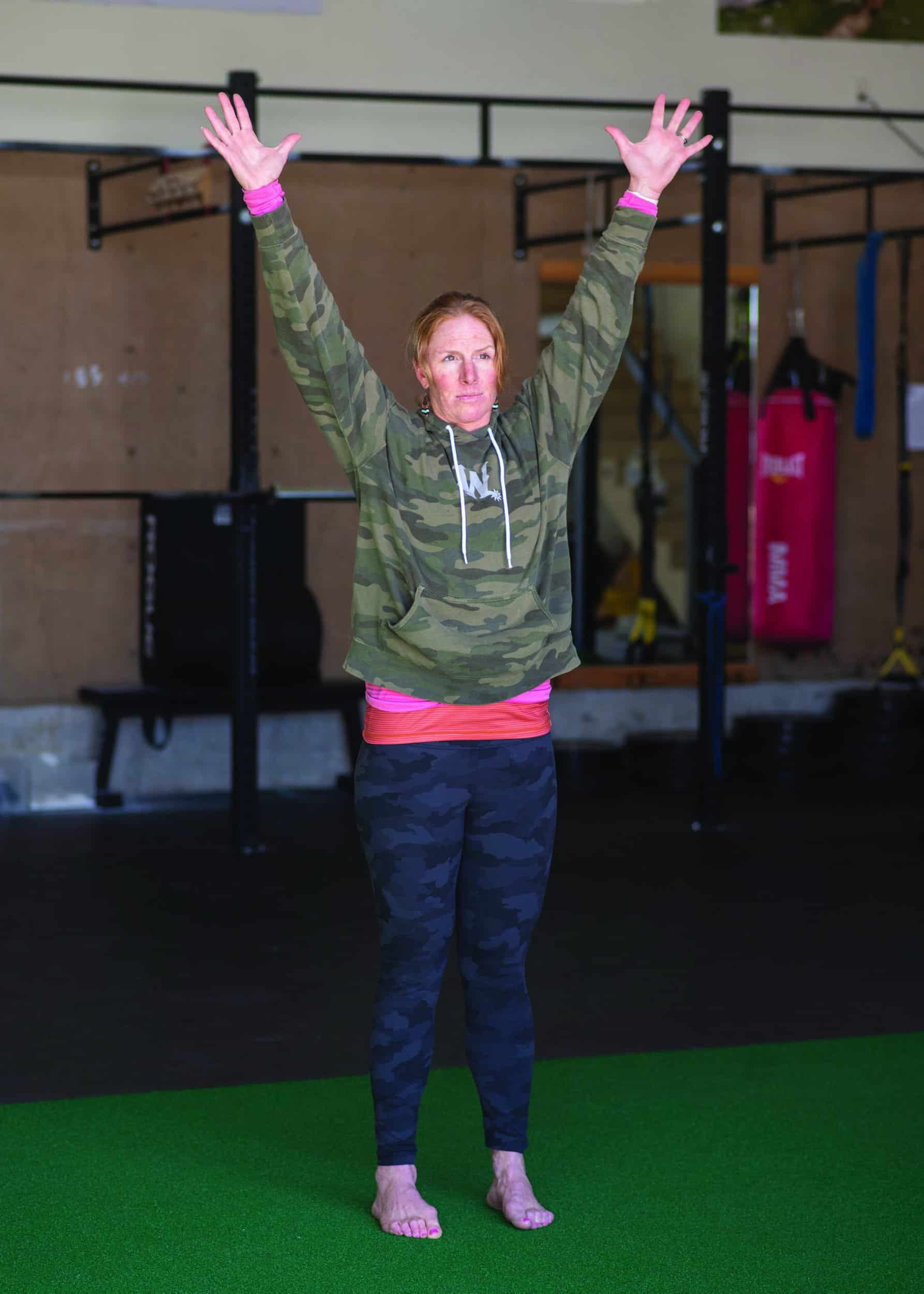
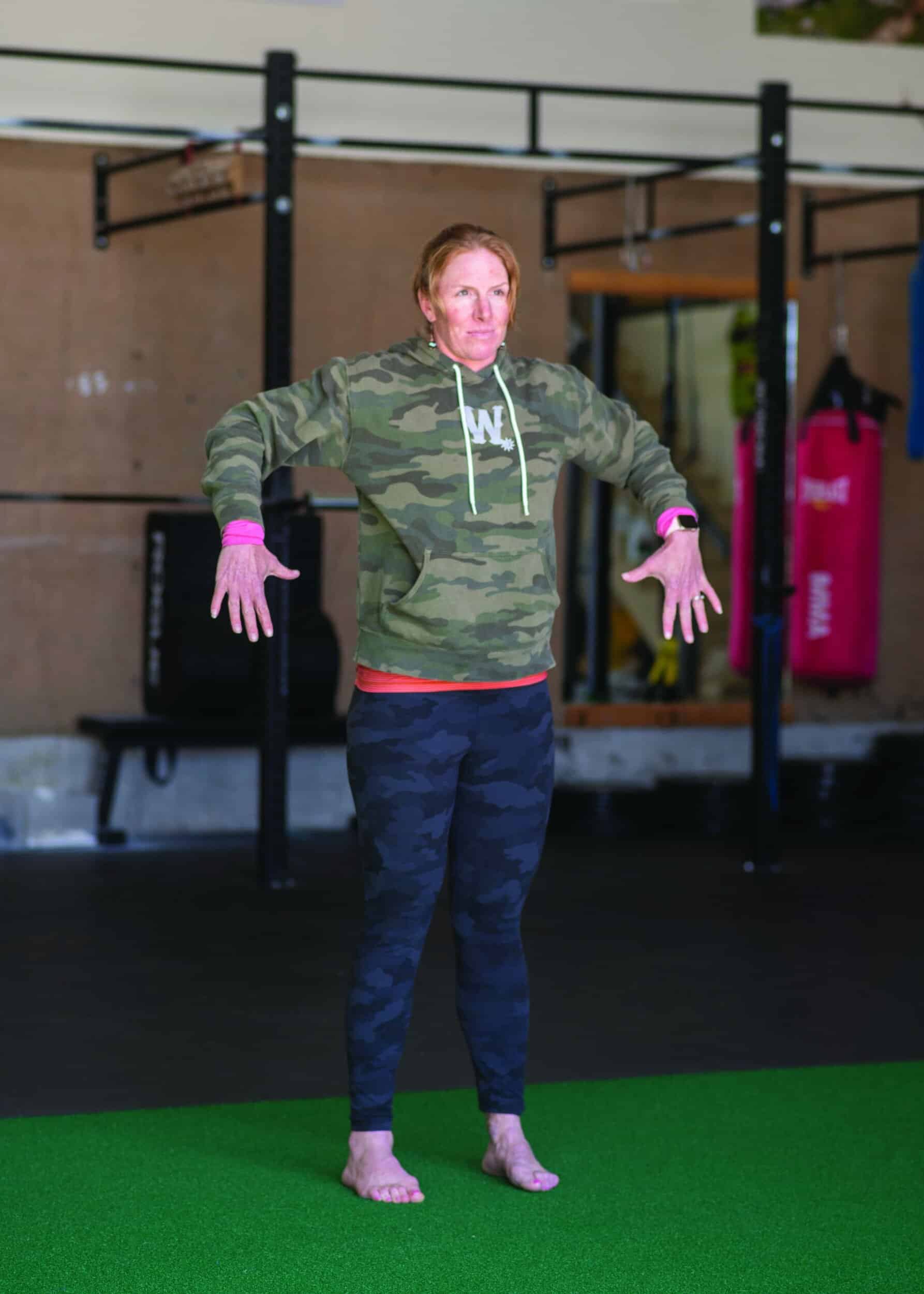
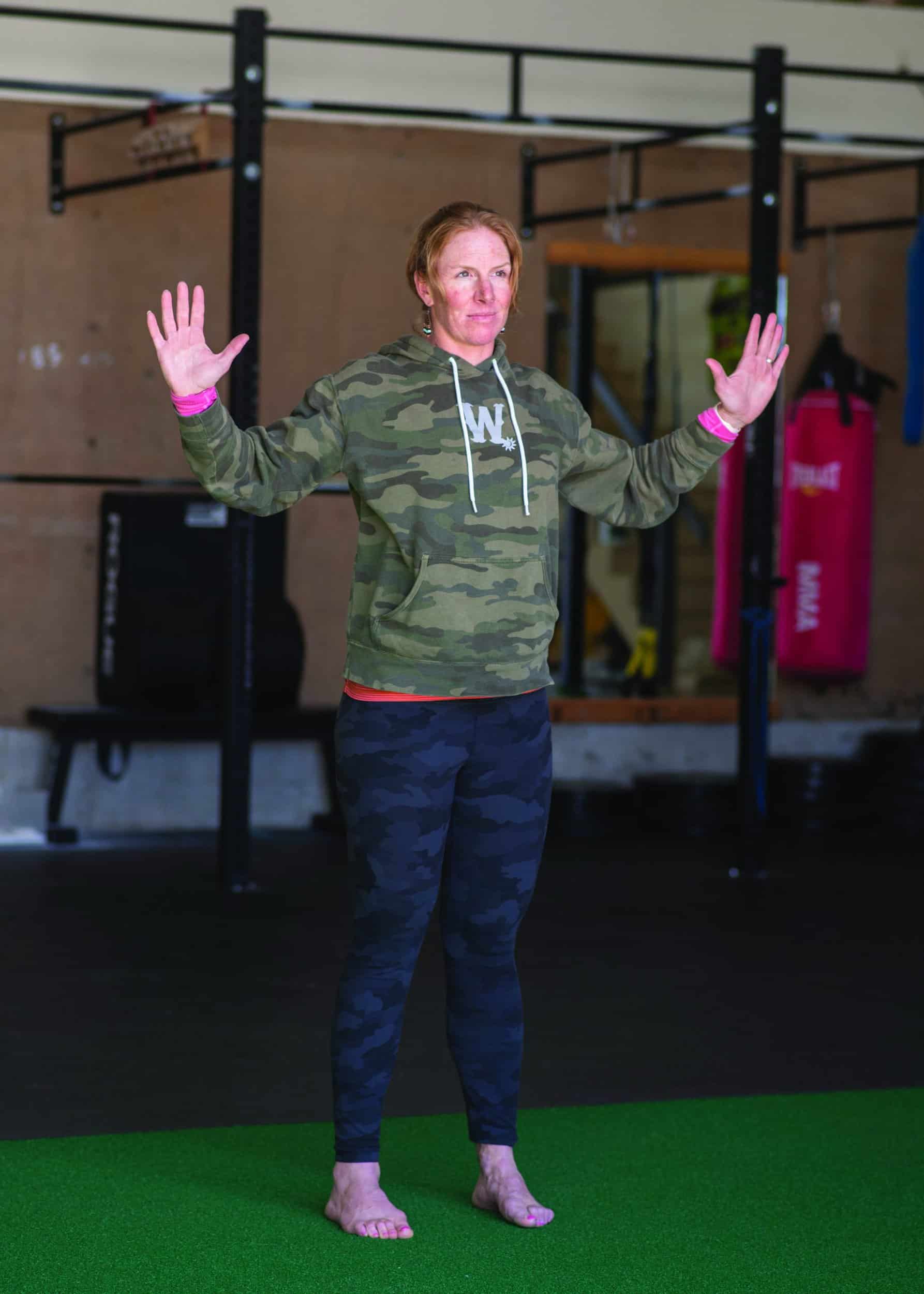
Y and L: These are helpful for shoulder impingements. Standing, with your hips pressed slightly back, start with your arms hanging down at your side. Pulling back with your shoulder blades and leading with your thumbs, raise both arms so that they are in the shape of the letter Y. For the L, start in the same position as you do for the Y, but have both elbows out to the side, bent at a 90-degree angle and even with your shoulders. Start with your hands below your shoulders and then pivot at the elbow while maintaining the 90-degree bend so that your hands are above the elbow and in the shape of the letter L. Do three sets of 10 reps of each exercise. Mobility Exercises You Can Do at HomeY and L: These are helpful for shoulder impingements. Standing, with your hips pressed slightly back, start with your arms hanging down at your side. Pulling back with your shoulder blades and leading with your thumbs, raise both arms so that they are in the shape of the letter Y. For the L, start in the same position as you do for the Y, but have both elbows out to the side, bent at a 90-degree angle and even with your shoulders. Start with your hands below your shoulders and then pivot at the elbow while maintaining the 90-degree bend so that your hands are above the elbow and in the shape of the letter L. Do three sets of 10 reps of each exercise.
Plated ankle restriction: To work on ankle mobility, use a 2.5–3-inch heavy band. Secure one end to an immobile object. Step into the opposite end of the band with one foot and place the band so that it sits where your ankle meets your foot. Place a barbell weight plate (a thick hardcover book works, too) about three feet in front of where the band is secured and step onto the plate/book with your entire banded foot. You are kneeling on the opposite leg for support. Keeping the banded foot flat, flex that ankle forward so that the corresponding knee passes beyond the front of your toes. Do about 20 reps with each leg, holding each rep for about 3 seconds.
Deadlift: This activates and loosens hamstrings and teaches body awareness. You can do this with a barbell, kettlebells, or dumbbells. Start by standing with both feet flat on the floor and about shoulder-width apart. Bring your hands to the floor to pick up your weights by hinging at your hips and pushing them back while keeping a flat back. After grasping the weights, bring your hips forward to return to a standing position. Select a weight that allows you to do three sets of 10 reps.
The Amazing Squat
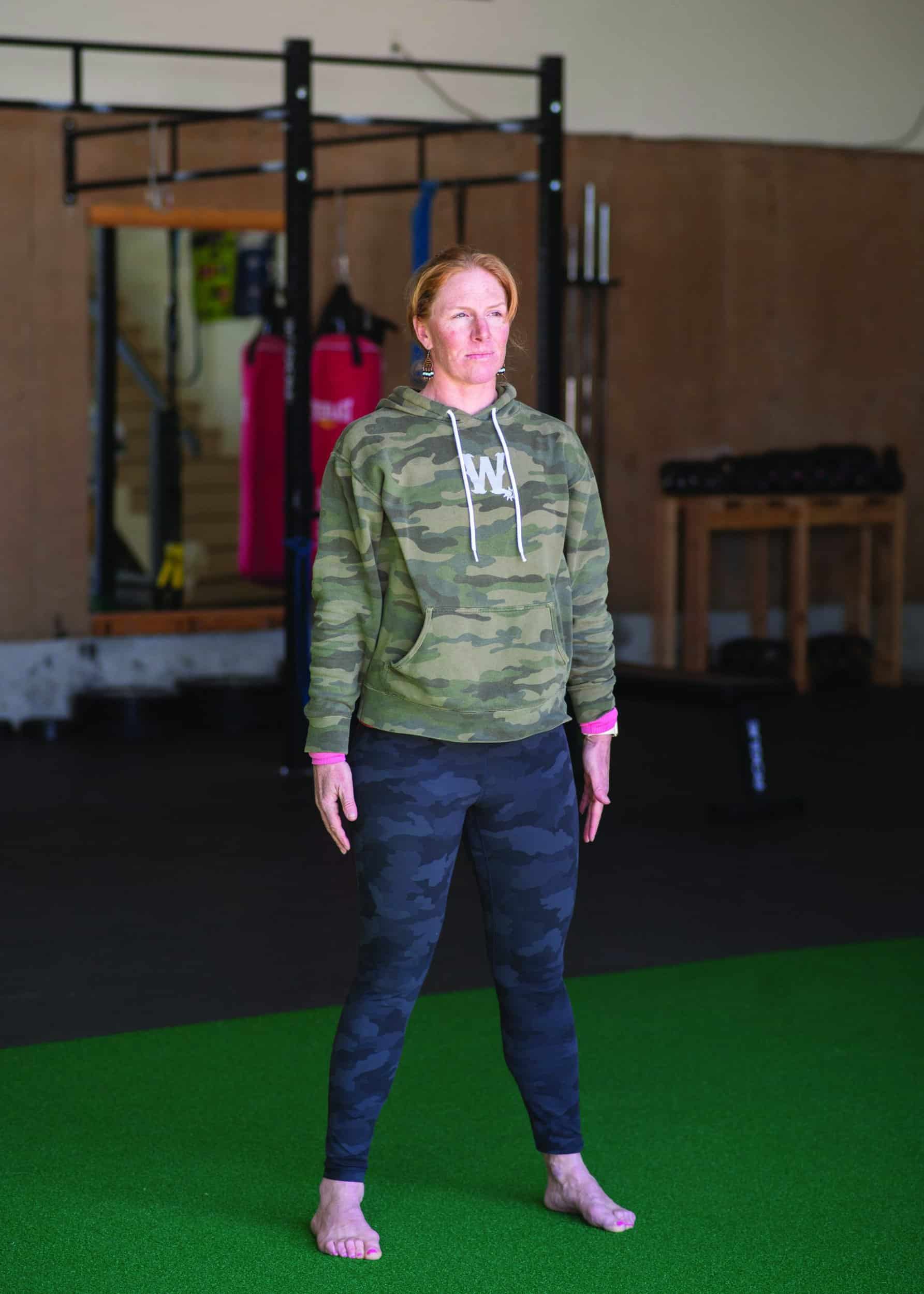
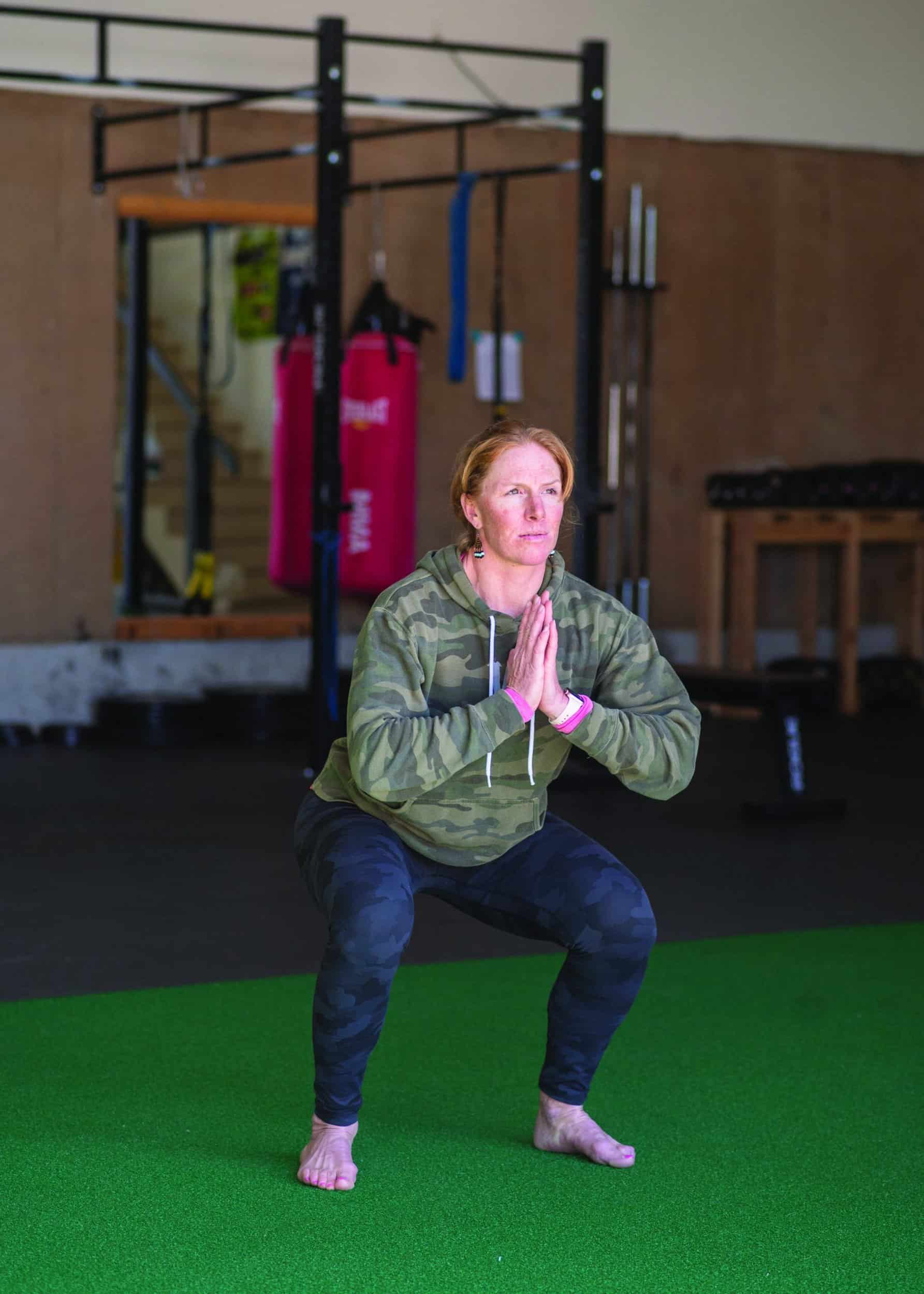
An article in The New York Times in late March, “The Power of the Squat,” explored the importance of squatting, and determined the motion might be the single most important motion to living and aging well. The article quotes Dr. Silvio Rene Lorenzetti, the director of the Performance Sports division of the Swiss Federal Institute of Sport in Magglingen: “The squat mimics so many physiological tasks of our daily living.” So, he says, when it comes to squats, the “biggest mistake you can make is to not start squatting.”
The abstract of a 2014 overview about squatting authored by Gregory Myer and available on the website of the National Library of Medicine’s National Center for Biotechnology Information states, “The squat movement pattern is arguably one of the most primal and critical fundamental movements necessary to improve sport performance, to reduce injury risk, and to support lifelong physical activity.” This is reiterated later in the study’s overview: “The squat movement pattern is required for essential activities of daily living such as sitting, lifting, and most sporting activities. It is also a staple exercise in training regimens designed to enhance performance and to build injury resilience.”
So how do you squat? No gym or specialized equipment is required. Start in a standing position with your feet flat on the floor, your toes facing forward, and your knees, hips, neck, and spine in a neutral position. Engage your core muscles and pull your shoulders back and down. As you begin to descend, shift your weight onto your heels and flex at the knees, ankles, and hips but keep your chest, neck, and spine in an upright position—don’t lower yourself by rounding your spine. Look for your knees to track over your toes and to not collapse inward. (If you notice the latter happening, it is usually because of weak hip abductors.) Ideally, you can lower yourself so that your quads are parallel to the floor. To stand up, engage your glutes and push through your heels. Start with three sets of 10 squats but stop earlier if your form deteriorates. Work up to five sets, with a several-minute break in between, of 20. JH





